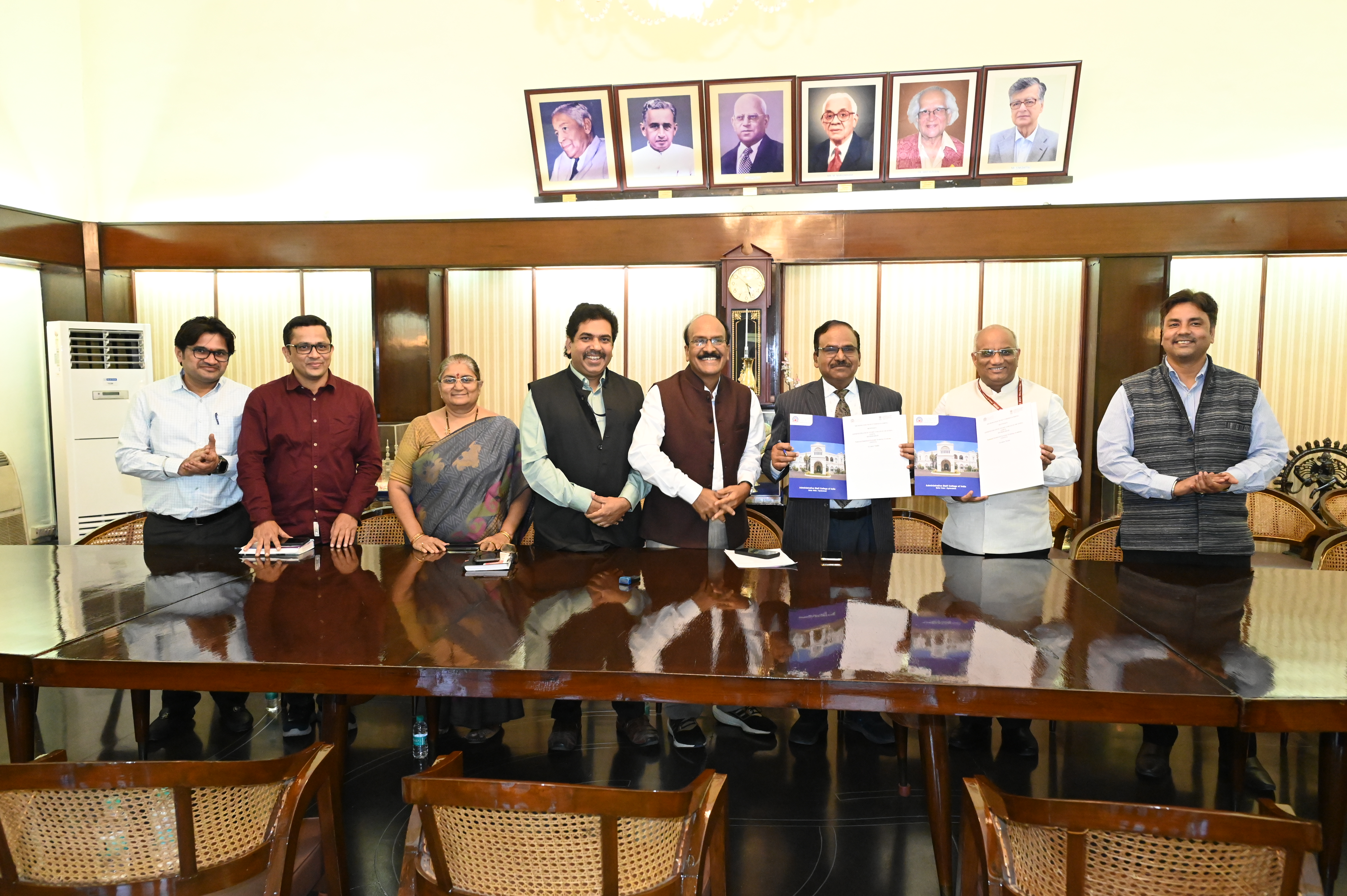Roorkee, Uttarakhand | Dec 13: Indian Institute of Technology Roorkee successfully conducted the Grand Finale of the Smart India Hackathon (SIH) 2025 – Hardware Edition as a Nodal Centre for the Ministry of Education’s Innovation Cell. The five-day national event (8–12 December) brought together top hardware innovators from across India to develop implementable solutions to critical national challenges.

The Smart India Hackathon, launched by the Government of India and guided by the vision of the Hon’ble Prime Minister Shri Narendra Modi, has grown into one of the world’s largest open-innovation platforms for students. It empowers young minds to solve real-life challenges posed by ministries, industries, and public-sector organisations. SIH plays a pivotal role in advancing Atmanirbhar Bharat, Digital India, and the national innovation mission by encouraging indigenous design, rapid prototyping, and technology-led problem-solving. The Government’s continued support for SIH reflects its commitment to positioning India’s youth at the forefront of hardware, software, and deep-tech innovation.
This year, IIT Roorkee hosted five major hardware problem statements issued by two key ministries:
· Ministry of Home Affairs (NSG & BSF): Surveillance during extreme weather; Handheld radio set with satellite-based personal tracking.
· Ministry of Agriculture & Farmers Welfare (DoA&FW): Sugarcane maturity prediction device; Low-cost cotton-picking machinery; Advanced jute ribboner machine for in-situ retting.
A total of 23 shortlisted teams from leading institutions across Tamil Nadu, Haryana, West Bengal, Chhattisgarh, Madhya Pradesh, Telangana, Jharkhand, Maharashtra, and Uttar Pradesh participated in the event. They represented institutions such as the University College of Engineering, Kancheepuram, Chennai Institute of Technology, IIIT Sonipat, Shri Shankaracharya Professional University, and Samrat Ashok Technological Institute, among others. Teams worked intensively through day-and-night sessions involving design, prototyping, simulation, testing, and continuous mentoring by ministry representatives, including the National Security Guard, Border Security Force, and the Department of Agriculture & Farmers Welfare.
The Grand Finale concluded today with final evaluations and the valedictory ceremony. Winners for each problem statement category are structured as follows (to be filled upon official declaration):
PS-wise Winners (Hardware Edition – IIT Roorkee Nodal Centre)
PS ID: SIH25196 – Surveillance during extreme weather conditions (MHA–NSG)
Joint Winners: Impact Innovators and Fenix
Solution Highlight: Developed an all-terrain, weather-resilient surveillance system integrating thermal imaging, autonomous drone patrol, and real-time alert analytics. The solution ensures continuous monitoring even in heavy rain, fog, or low-visibility conditions, supporting NSG teams with faster response and enhanced situational awareness.
PS ID: SIH25255 – Handheld Radio Set with Satellite Personal Tracking System (MHA–BSF)
Winner: Megatron
Solution Highlight: Built a rugged handheld radio device equipped with low-power satellite communication and GPS-based personal tracking. The system offers encrypted voice communication, SOS beaconing, and real-time location sharing—significantly improving border patrol safety and coordination during operations.
PS ID: SIH25264 – Prediction of Optimum Maturity of Sugarcane Crop (MoA&FW)
Winner: Farmedge
Solution Highlight: Designed a portable, farmer-friendly digital scanner that uses multispectral sensing and AI models to predict sugarcane maturity. The device gives instant field-level insights on harvest readiness, improving yield quality, reducing losses, and enabling data-driven decision-making for farmers.
PS ID: SIH25266 – Low-Cost Machinery for Cotton Picking (MoA&FW)
Winner: Mindsmiths
Solution Highlight: Created an affordable semi-automated cotton picking machine with soft-grip mechanical arms and debris-reduction technology. The innovation boosts picking speed, minimizes waste, and reduces labor dependency – offering a scalable solution for small and marginal cotton farmers.
PS ID: SIH25267 – Jute Ribboner Machine for Enhanced In-situ Retting (MoA&FW)
Winner: Caffeinated Coders
Solution Highlight: Engineered a lightweight, energy-efficient jute ribboner machine capable of uniform ribbon formation to accelerate in-situ retting. The solution improves fibre quality, reduces manual effort, and supports sustainable jute production by optimizing the traditional retting process.
Prof. K. K. Pant, Director, IIT Roorkee, congratulated the participants and said, “SIH 2025 demonstrates the remarkable innovation capability of India’s youth. IIT Roorkee is proud to enable this national platform and support the development of hardware solutions that will contribute to India’s technological growth and competitiveness.”
The Chief Guest for the valedictory ceremony, Prof. V. K. Malik, Dean SRIC, IIT Roorkee, said, “The solutions developed during this five-day finale demonstrate exceptional clarity, commitment, and technical depth. The participating teams have shown how real-world challenges can be addressed through indigenous hardware innovation, and we are proud to serve as a platform for such national talent.”
Prof. Varun Sharma (SPOC, SIH 2025) and Faculty Coordinator Tinkering Lab, IIT Roorkee shared, “The passion, discipline, and engineering depth exhibited by students across the five-day event were exemplary. The ideas presented reflect the next generation of indigenous hardware innovation.”
With the successful hosting of SIH 2025 – Hardware Edition, IIT Roorkee reinforces its leadership in fostering a vibrant innovation ecosystem, strengthening industry-academia collaboration, and empowering young technologists to contribute meaningfully to India’s growth.




